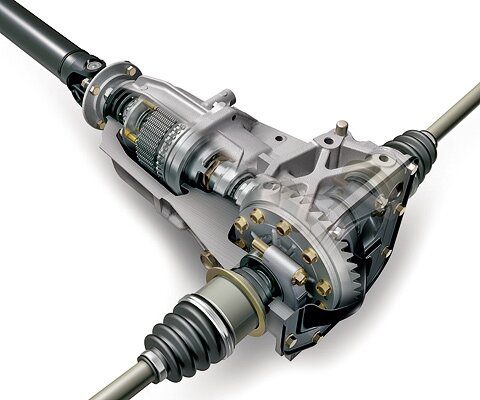
Test: BMW X3 xDrive30d
Content
As one of the initiators of the SAV (Sports Activity Vehicle) segment, BMW felt the demand back in 2003 for premium hybrids that did not stand out in any way in terms of their size. The fact that more than 1,5 million units of the X3 have been sold to date is of course considered a success, although it can be said that only with a new generation will this car get its meaning and proper placement.
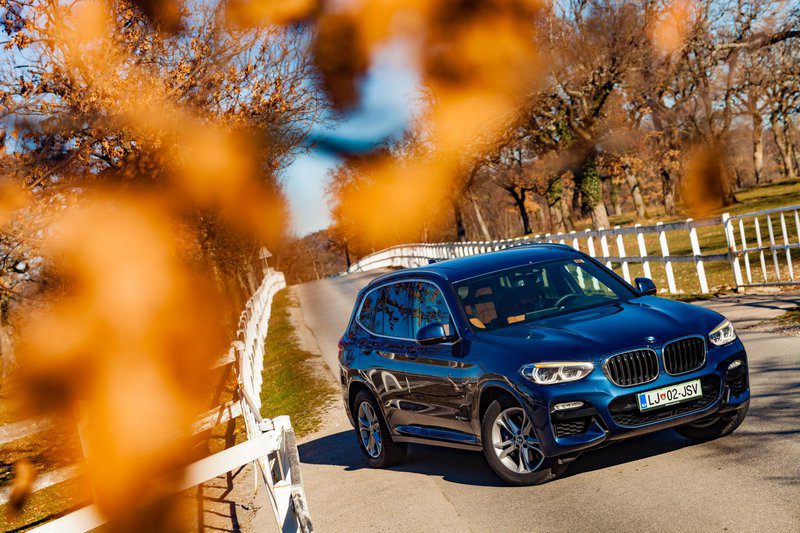
Why? Mainly because the new X3 has grown as much as necessary to achieve the level of usability of a higher-end crossover (BMW X5, MB GLE, Audi Q7 ...), but it all comes together in a much more compact and elegant body. Yes, the Bavarians were definitely not trying to convert a believer who is praying in favor of another brand, but its design attracts more those whom he knows well. The competition in this segment is pretty fierce right now and it's better to keep your herd safe than to hunt stray sheep. The extra five inches as the X3 grows isn't really that much audible or visible on paper, but the feeling of extra space inside the car is immediately felt. The fact that they increased the wheelbase by the same number of centimeters and pressed the wheels even deeper into the outer edges of the body contributed to the spaciousness of the cabin.

In fact, there has never been a lack of room for the driver and front passenger in the X3. And here, of course, history repeats itself. The working environment is familiar and the driver who knows BMW ergonomics will feel like a fish in the water. Most striking is the enlarged ten-inch center display of the multimedia system. You no longer need to leave fingerprints on the screen or turn the iDrive wheel with your hand to navigate the interface. It is enough to send a few commands manually, and the system will recognize your gestures and respond accordingly. It may seem a little unnecessary and pointless at first, but the author of this text, after the deadline, tried in vain to mute the music or move to the next radio station on other machines using gestures.
Of course, this does not mean that they have abandoned the classic solutions, and it is also true that we can still find a rotary switch for adjusting the radio volume in the center console, as well as other classic switches for adjusting the air conditioning. in the car.
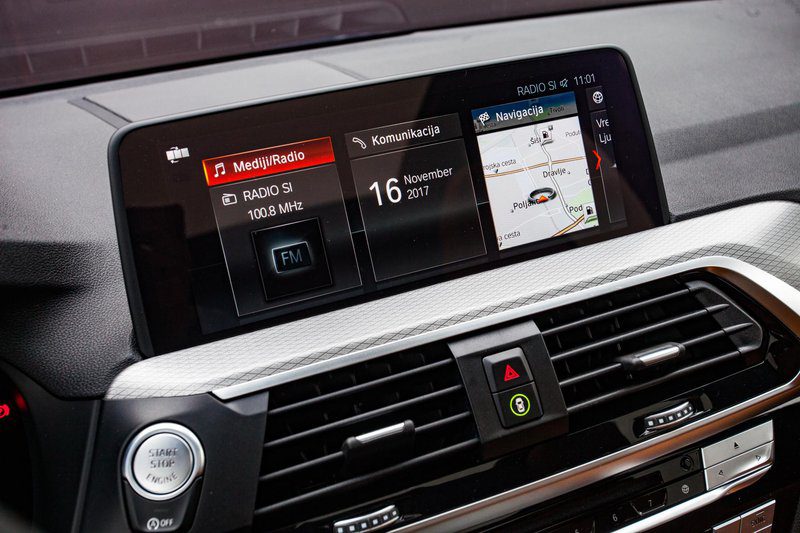
The new X3 also summarizes all the new technologies, driver workstation digitization and assisted safety systems available in some of the "larger" models. Here we would like to highlight the excellent performance of Active Cruise Control, which, in combination with the Vehicle Lane Keeping Assist, really ensures minimal driver effort over long distances. The fact that the X3 can also read road signs and adjust cruise control up to a certain limit is not exactly what we saw the first time, but it is one of the few competitors to which we can add deviation in any direction we want (up to 15 km / h above or below the limit).
The increase in inch space is by far the easiest to spot behind the driver's back and in the trunk. The back bench, which divides in a 40:20:40 ratio, is spacious in all directions and allows for a comfortable ride, whether Gašper Widmar looks like a passenger or a teenager with a plate in hand. Well, this one will certainly have some comments before, as the X3 on the back nowhere offers an additional USB port to power its tablet. The basic boot capacity is 550 liters, but if you play with the previously mentioned bench lowering methods, you can reach 1.600 liters.
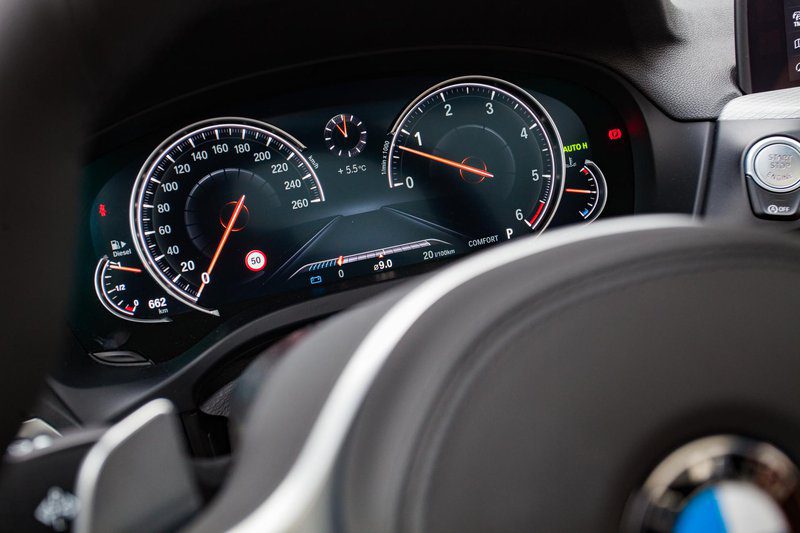
While in our market we can expect buyers to primarily opt for the 248-litre turbodiesel engine, we had the opportunity to try out the 3-horsepower 5,8-litre version. If someone had hinted to us ten years ago that a diesel XXNUMX would hit XNUMX mph in just XNUMX seconds, we'd have a hard time believing it, right? Well, such an engine is designed not only for hard accelerations, but also for the car to always offer us a decent power reserve at the chosen moment. The eight-speed automatic transmission is also very helpful here, the main task of which is to make it as unobtrusive and noticeable as possible. And he does it well.
Of course, BMW also offers select driving profiles that further adapt all vehicle parameters to the task at hand, but in all honesty, the ix is best suited for the Comfort program. Even in this driving program, he remains pleasant enough and happy to be seduced around corners. With a combination of precise steering, good steering wheel feedback, balanced stance, engine responsiveness and quick transmission response, this car is definitely one of the most dynamic in its class and can only be supported by the Porsche Macan and Alfin Stelvio at the moment. side.
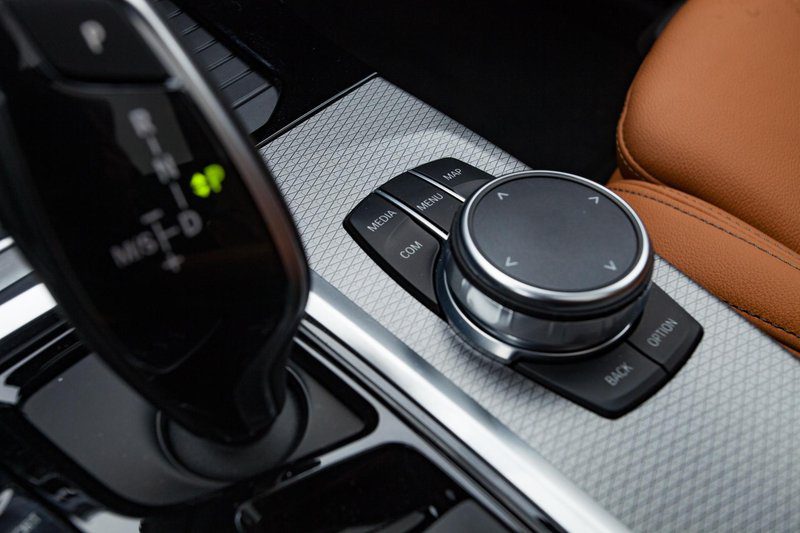
Somewhere between these two cars is the new X3. For a three-liter diesel engine, you will have to deduct a good 60 thousand, but the car is mainly equipped with all-wheel drive and an automatic transmission. While the premium car is expected to be well-equipped, unfortunately this is not the case in this case. To reach a satisfactory level of comfort, you still have to pay at least ten thousand more. Well, this is already the amount when she begins to offer herself a model with a weaker engine.
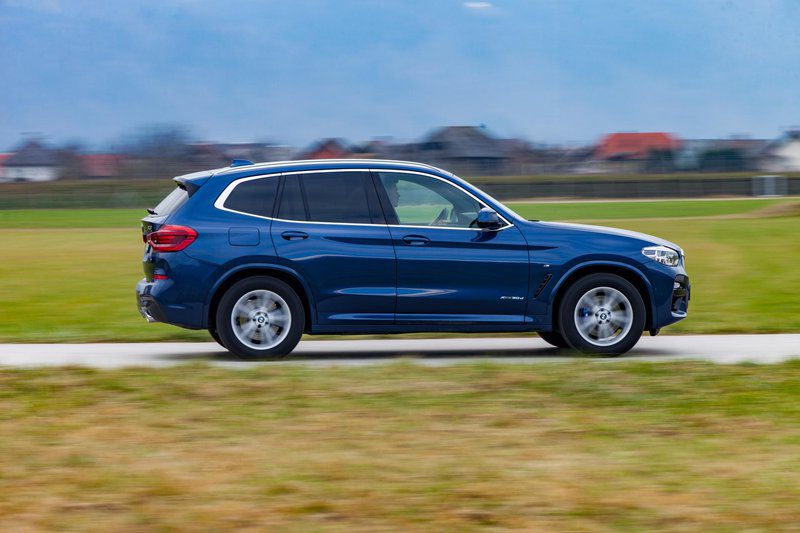
BMW X3 xDrive 30d
Basic data
| Sales: | BMW GROUP Slovenia |
|---|---|
| Test model cost: | 91.811 € |
| Base model price with discounts: | 63.900 € |
| Test model price discount: | 91.811 € |
| Power: | 195kW (265 KM) |
| Acceleration (0-100 km / h): | 5,6 with |
| Maximum speed: | 240 km / h |
| Guarantee: | 2 years general warranty, 3 years varnish warranty, 12 years rust warranty, 3 years or 200.000 km warranty Including repairs |
| Systematic review | 30.000 km / 24 |
Cost (up to 100.000 km or five years)
| Fuel: | 7.680 € |
|---|---|
| Tires (1) | 1.727 € |
| Loss of value (within 5 years): | 37.134 € |
| Compulsory insurance: | 5.495 € |
| CASCO INSURANCE (+ B, K), AO, AO + | 15.097 ( |
| Calculate the cost of auto insurance | |
| Buy up | € 67.133 0,67 (km cost: XNUMX €) |
Technical information
| engine: | 6-cylinder - 4-stroke - in-line - turbodiesel - front mounted transversely - bore and stroke 90 × 84 mm - displacement 2.993 cm3 - compression 16,5:1 - maximum power 195 kW (265 hp) .) at 4.000 rpm - average piston speed at maximum power 11,2 m / s - specific power 65,2 kW / l (88,6 hp / l) - maximum torque 620 Nm at 2.000-2.500 rpm - 2 overhead camshafts (timing belt) - 4 valves per cylinder - common rail fuel injection - exhaust turbocharger - aftercooler |
|---|---|
| Energy transfer: | engine drives all four wheels - 8-speed automatic transmission - gear ratio I. 5,000 3,200; II. 2,134 hours; III. 1,720 hours; IV. 1,313 hours; v. 1,000; VI. 0,823; VII. 0,640; VIII. 2,813 – differential 8,5 – rims 20 J × 245 – tires 45 / 275-40 / 20 R 2,20 Y, rolling circumference XNUMX m |
| Capacity: | top speed 240 km/h - 0-100 km/h acceleration in 5,8 s - average fuel consumption (ECE) 6,0 l/100 km, CO2 emissions 158 g/km |
| Transportation and suspension: | SUV - 4 doors, 5 seats - Self-supporting body - Front single suspension, coil springs, 2,7-spoke transverse rails - Rear multi-link axle, coil springs - Front disc brakes (forced cooling), rear disc brakes (forced cooling), ABS, rear electric parking brake wheels (switching between seats) - rack and pinion steering wheel, electric power steering, XNUMX turns between extreme points |
| Mass: | empty vehicle 1.895 kg - permissible total weight 2.500 kg - permissible trailer weight with brake: 2.400 kg, without brake: 750 kg - permissible roof load: 100 kg |
| External dimensions: | length 4.708 mm - width 1.891 mm, with mirrors 2.130 mm - height 1.676 mm - wheelbase 2.864 mm - front track 1.620 mm - rear 1.636 mm - driving radius 12 m |
| Inner dimensions: | longitudinal front 880–1.100 mm, rear 660–900 mm – front width 1.530 mm, rear 1.480 mm – head height front 1.045 mm, rear 970 mm – front seat length 520–570 mm, rear seat 510 mm – steering wheel ring diameter 370 mm - fuel tank 68 l |
| Box: | 550-1.600 l |
Our measurements
| T = 3 ° C / p = 1.028 mbar / rel. vl. = 77% / Tires: Pirelli Sottozero 3 / 245-45 / 275 R 40 Y / Odometer status: 20 km | |
| Acceleration 0-100km: | 5,6s |
|---|---|
| 402m from the city: | 14,0 years ( 166 km / h) |
| test consumption: | 6,9 l / 100km |
| Fuel consumption according to the standard scheme: | 6,3 l / 100km |
| Braking distance at 100 km / h: | 36,5m |
| AM table: | 40m |
| Noise at 90 km / h | 58dB |
| Noise at 130 km / h | 62dB |
| Test errors: | Unmistakable |
Overall rating (504/600)
The BMW X3 in its third version not only grew a little, but also plucked up courage and stepped into the territory of its older brother called the X5. It easily competes with us in usability, but definitely surpasses it in agility and driving dynamics.
Cab and trunk (94/110)
The difference in size compared to its predecessor provides ample space, especially in the rear seat and trunk.
Comfort (98
/ 115)Even though it is designed more dynamically, it works great as a car for a comfortable driving experience.
Transmission (70
/ 80)From a technological point of view, it's hard to blame him, we only doubt the advisability of choosing the strongest custom diesel.
Driving performance (87
/ 100)He convinces with a reliable position, is not afraid of turns, and on the acceleration and final speed he cannot be blamed for anything.
Security (105/115)
Good passive safety and advanced assistance systems bring a lot of points
Economy and environment (50
/ 80)The weakest point of this machine is this section. High price and medium guarantee require scoring tax.
Driving pleasure: 3/5
As a crossover, it's amazingly fun when cornering, but the best feeling is when we let the driver-assistance system take over.
We praise and reproach
open space
digitization of driver environment
operation of auxiliary systems
utility
driving dynamics
it has no USB ports on the back bench
too similar in design to its predecessor
